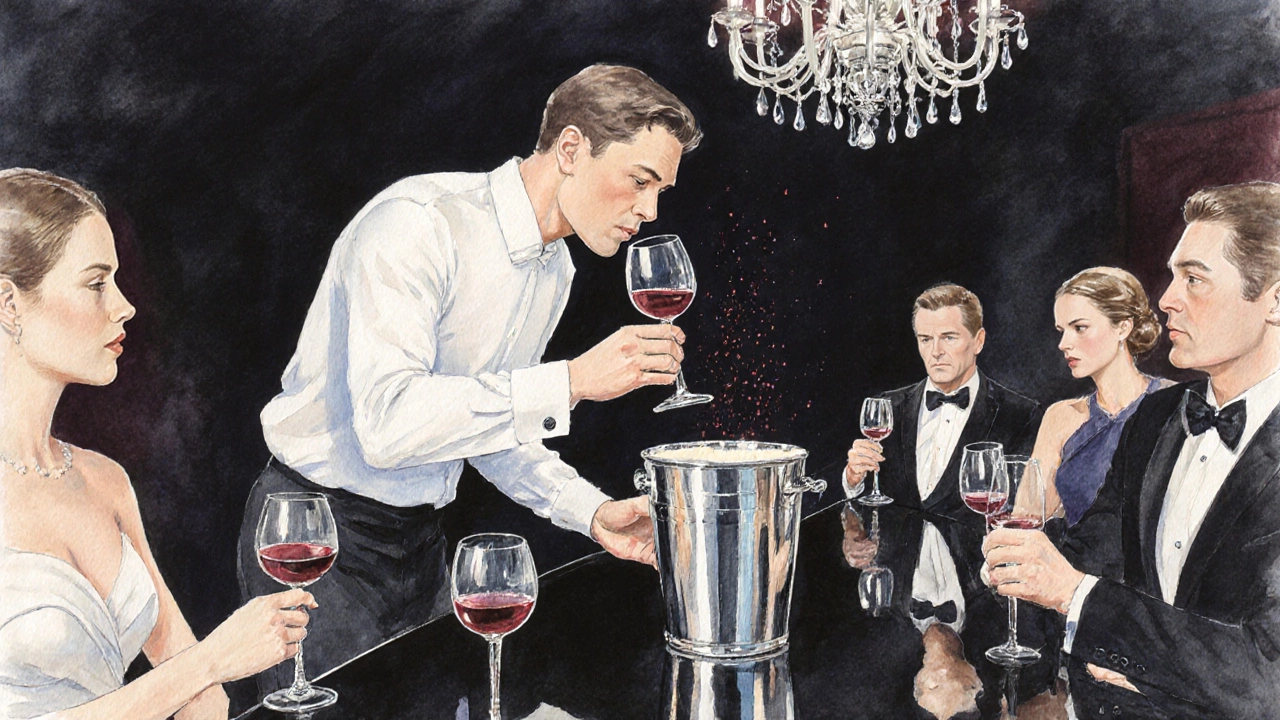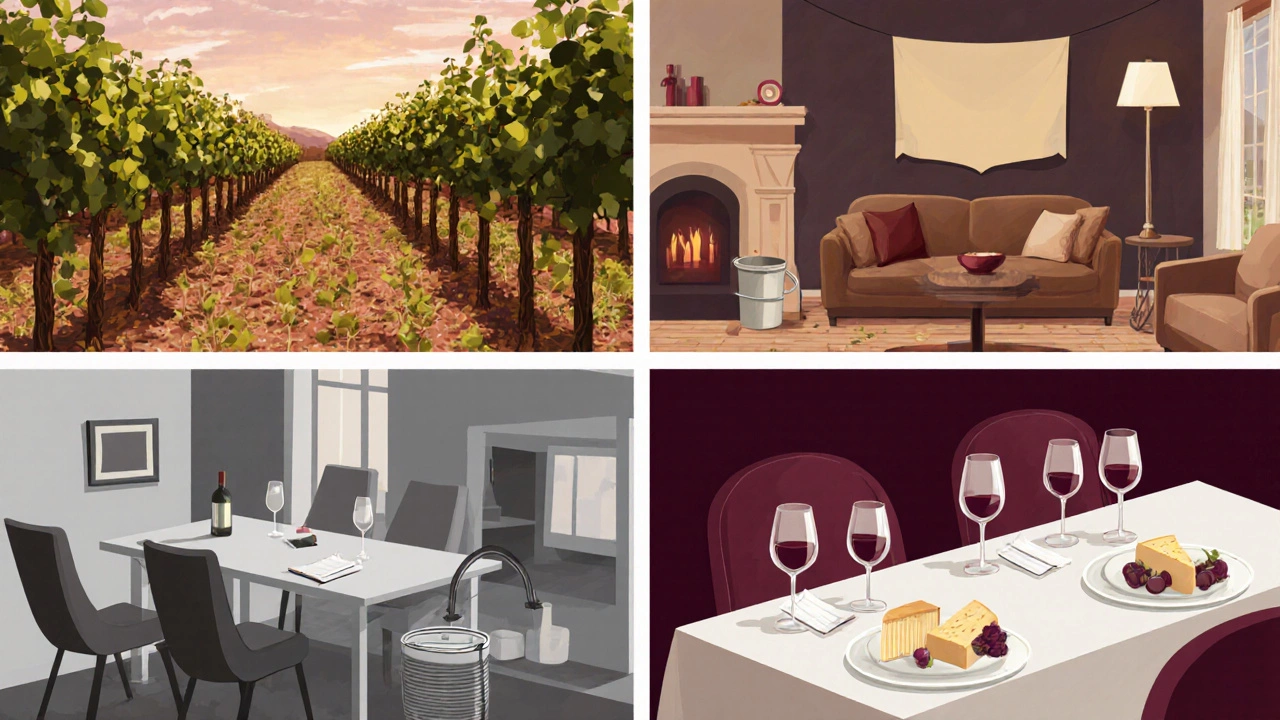Wine Tasting Etiquette: Should You Drink All the Wine?
 Oct, 16 2025
Oct, 16 2025
Wine Tasting Etiquette Decision Guide
Should You Drink or Spit?
Answer a few questions to determine the right etiquette for your wine tasting situation.
Ever found yourself at a wine tasting wondering whether to sip, swallow, or spit out every drop? The answer isn’t as simple as "yes" or "no"-it depends on the event, the host, and the unwritten rules of the tasting world.
What a Wine Tasting Actually Is
Wine tasting is a guided sampling experience where participants evaluate several wines, often in small pours, to learn about flavors, aromas, and the winemaking process. Tastings can range from casual winery open‑houses to formal, invitation‑only events hosted by sommeliers or corporate clients.
Core Etiquette Rules You’ll Hear About
- Arrive on time and dress appropriately for the venue.
- Keep your phone on silent and avoid strong fragrances that could interfere with the aromas.
- Use the supplied wine glass -typically a tulip‑shaped glass that concentrates aromas and protects the wine’s temperature. for each pour.
- When in doubt, follow the lead of the sommelier the professional who guides you through the tasting, explaining the wines and answering questions..
To Swallow or Not to Swallow: The Spit Bucket Debate
Most formal tastings provide a spit bucket a small container placed on the table for participants to discard wine they’ve sampled.. The primary reasons are:
- Alcohol intake control - tasting ten or more wines can quickly add up.
- Preserving your palate so you can accurately judge each subsequent wine.
- Respecting the host’s budget; many events charge per pour.
If you feel comfortable and the event is informal, swallowing a few pours is usually fine. But at a professional or large‑group tasting, spitting is the norm.
When It’s Okay to Drink Every Pour
There are a few scenarios where finishing each glass is acceptable:
- Private home tasting with friends who have stocked the wines themselves.
- Wine club gatherings where members pay a flat fee and are encouraged to enjoy the selections.
- Food‑pairing events where the wines are meant to complement a multi‑course meal; drinking them enhances the experience.
In these cases, the host has usually accounted for the extra volume, and the social atmosphere is more relaxed.

Understanding the Host’s Perspective
Whether you’re at a winery, a restaurant, or a private home, the host often incurs a cost per pour. If you’re invited to a corporate or charity tasting, the venue may be covering those costs, but it’s still courteous to follow the provided guidelines. If you’re unsure, simply ask the host the person or organization that organized the tasting. or the sommelier.
Practical Tips to Navigate Any Tasting
- Start with a sniff. Take a deep inhale to note the aroma before the first sip.
- Take a small sip, let it coat your mouth, then either swallow or spit.
- If you choose to spit, do it discreetly into the bucket; no one needs to see.
- Use a palate cleanser often a slice of bread, cheese, or water that neutralizes flavors between wines. to keep your senses sharp.
- Take notes. Jot down the wine name, region, and a brief impression - this helps you remember favorites.
- Ask questions. Hosts appreciate genuine curiosity, and you’ll learn more about the wine’s story.
Common Mistakes and How to Avoid Them
- Finishing every pour at a formal tasting - you’ll appear naïve about the event’s cost and etiquette.
- Skipping the spit bucket because you think it’s rude - the bucket is provided for a reason and is considered polite.
- Talking with a full mouth - it muffles your voice and can spread wine around the table.
- Ignoring the order of wines - tastings are usually arranged from lightest to fullest; jumping around skews your perception.

Quick Reference Checklist
- Arrive on time and dress appropriately.
- Use the provided wine glass and spit bucket.
- Start with a sniff, then sip.
- Spit if the tasting is formal or involves many wines.
- Use a palate cleanser between pours.
- Take brief notes for each wine.
- Ask the host or sommelier if you’re unsure.
Behavior Comparison Across Tasting Types
| Setting | Typical Pour Size | Spit? | Drink All? | Notes Recommended? |
|---|---|---|---|---|
| Winery Open House | 30‑50ml | Yes (recommended) | Optional | Yes |
| Private Home Tasting | 60‑90ml | No | Yes, if you wish | Optional |
| Corporate/Charity Event | 30‑40ml | Yes (expected) | No | Yes |
| Food‑Pairing Dinner | 75‑100ml (served with course) | Usually No | Yes, to enjoy pairing | Yes |
Frequently Asked Questions
Is it rude to spit at a wine tasting?
Not at all. In most professional tastings, spitting is the standard practice to keep your palate clear and to respect the host’s budget.
Can I bring my own wine to a tasting?
Usually no. The host selects the wines to showcase specific regions or styles. Bringing your own can upset the flow of the event.
How many wines can I reasonably taste in one session?
Ten to twelve small pours is a common upper limit before palate fatigue sets in.
What should I do if I feel light‑headed?
Stop drinking, sip water, and switch to spitting. Most hosts will understand and may offer a break.
Are there any etiquette rules for talking during a tasting?
Keep conversations low‑key, avoid strong perfumes, and wait for a pause before asking questions.